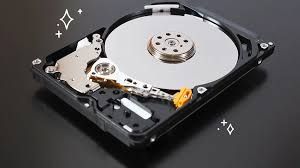How do you Recover my Data?
Here at Shepard Technologies, we use a state of the art program that's able to read failing hard disk drives (HDDs) and find your files that may not be showing up correctly. We can save these files and transfer them onto an external drive or new computer. If we weren't able to recover your data, we are proud to share that we partner with the company FileSavers. FileSavers is a unique company that will completely disassemble a drive in a sanitary environment with precise tools in order to extract your data. FileSavers has an incredibly high success rate, but be warned that sometimes data is so lost that it can no longer be recovered.


What is a Hard Disk Drive?
A hard drive, or HDD, is an older piece of technology that is starting to become fazed out. We see these fail much more often that solid state drives, or SSDs, due to the mechanics of the hard drive. Inside the casing, there is a physical disk that spins and is read with a laser which then presents your data to you, the user. Over time, the parts that spin this disc wear out, or if the drive is jostled the right way, can cause the disc to go out of allignment, causing it to be unable to be read. The signs your drive is starting to fail and you need to backup immediately is your computer starting to run very slowly and take a long time to boot up.
What is a Solid State Drive?
A solid state drive, or SSD, is the newer of the technology drives. These read your data much in the way a USB Flash drive does, so it is much faster and much more reliable. However, these can also be prone to failure at times, which more often manifests as frequent "Blue Screen of Death" crashes. SSDs can come in different shapes and sizes, from the
standard size, the
NVME stick like appearance, to the
Micro NVME which looks more like a card, or chip, we are able to recover data from all types of SSDs that same as we can HDDs, if needed.

